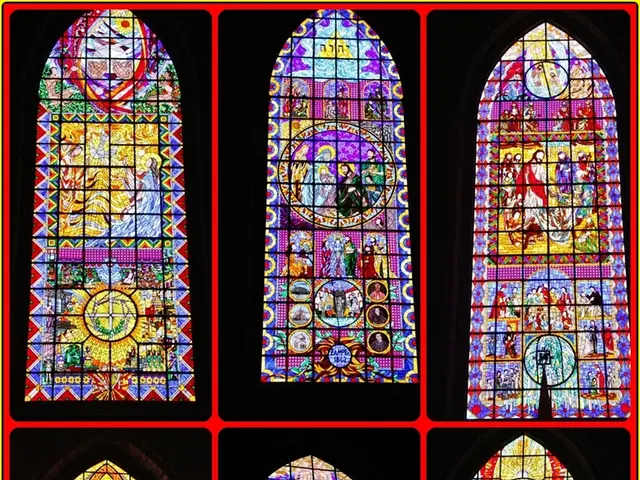Unearthing the Scientific Explanations Behind the Ten Biblical Plagues of Egypt
Every year, Jewish people worldwide celebrate Passover, marking the Exodus when the Israelites left Egypt. According to the Torah, this journey was preceded by Moses' request for Pharaoh's consent to free the Hebrews from enslavement, which was met with resistance until God sent ten plagues to convince him.
In the first plague, the Nile waters turned to blood. Some argue that this may have been caused by a sudden algal bloom called a red tide. These events can occur in freshwater ecosystems, like the Nile, triggered by conditions such as increased light or nutrients that allow microscopic algae to multiply, tinting the water a bloody red. This phenomenon can harm wildlife, kill fish, and even produce toxins that endanger humans and other organisms.
The second plague brought swarms of frogs inside Egyptian homes, ovens, and cookware. While examples of "raining frogs" are rare, strong winds might have transported these amphibians from one area to another. More recently, a similar event occurred in Greece in 2010 when thousands of frogs emerged from a lake, disrupting traffic for days.
Lice, fleas, or gnats comprised the third plague, detected by the Hebrew word "Keenim." It's possible that the sudden absence of frogs, which typically feed on insects, led to a boom in fly populations. An exploration of this event in a National Geographic television special suggested that such a surge could have enabled the spread of bubonic plague, a disease carried by lice and fleas.
Scholars have proposed that wild animals, hornets, mosquitoes, or even a wolf-like beast could have triggered the fourth plague. Alternatively, the term "wild beasts" could have referred to an assortment of animals, including those typically considered dangerous, such as snakes, scorpions, lions, and bears.
The fifth plague affected the livestock, causing an epidemic that mirrors rinderpest, a deadly cattle disease faced during the 18th and 19th centuries. This viral affliction originated in Asia and arrived in Egypt via ancient trade routes. Rinderpest had a high fatality rate, causing the deaths of millions of cattle worldwide.
Boils formed the sixth plague, characterized by painful, pus-filled bumps on the skin. One explanation for this plague suggests that an outbreak of smallpox, which caused similar symptoms, might have triggered the biblical affliction.
For the seventh plague, a violent hailstorm accompanied by thunder and fire struck people, livestock, and trees. The exception was the Israelites' land, Goshen, which remained undisturbed. Some scientists speculate that a volcanic eruption on the Greek island of Santorini around 3,500 years ago could have contributed to these chaotic weather conditions.
The eighth plague involved a swarm of locusts that devoured remaining plants after the hailstorm. Analysts propose that the volcanic eruption on Santorini created favorable conditions for locusts, including higher precipitations and humidity that supported their growth.
During the ninth plague, darkness enshrouded Egypt for three days. Explanations for this darkness range from a solar eclipse to a cloud of volcanic ash. However, the persistence of light in the Israelites' homes weakens the hypothesis of a solar eclipse. Another theory proposes that the Santorini volcanic eruption spewed ash into the atmosphere, causing three days of darkness.
In the final plague, the firstborn Egyptians perished. Researchers have suggested that firstborns died due to consuming contaminated grain from moldy granaries. Mycotoxins, poisonous substances found in mold, could have caused illness and death in humans and other animals, with firstborn children and animals being particularly susceptible to their harmful effects.
In the realm of health and wellness, the intense boils experienced during the sixth plague might have resembled the painful, pus-filled eruptions caused by smallpox, a medical condition that mirrors those symptoms. The science behind this theory lies in the similarity between smallpox symptoms and those depicted during the biblical affliction.
Furthermore, in the study of space and astronomy, the dark veil that enshrouded Egypt during the ninth plague for three days could have been the result of a cloud of volcanic ash from a distant eruption, like the one that occurred on the Greek island of Santorini around 3,500 years ago. This theory explains the persistent light in the Israelites' homes, as the ash would have blocked the sun's rays elsewhere, causing darkness, yet not in Goshen.








